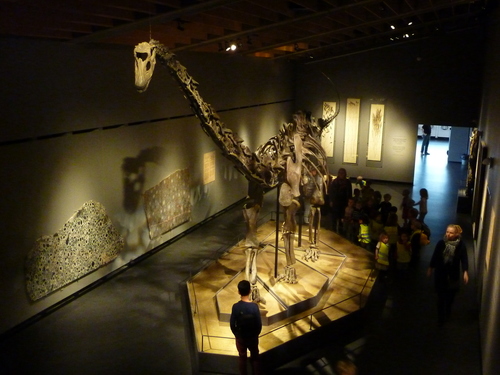
Diplodocus
Diplodocus longus, a giant of the Jurassic, roamed ancient forests with its iconic long neck and tail. This herbivore's efficient design allowed it to graze treetops, playing a crucial role in shaping its ecosystem by facilitating plant growth and maintaining balance in the environment.
9071.85 - 9989.52 kg
Weight
Length: 25.908 m; Height: 3.9624 m
Size
Brown, Red
Color
10 years
Age of Sexual Maturity
Low
Aggression
9 mph
Top Speed
Characteristics
Diplodocus longus was a massive, long-necked herbivore from the Late Jurassic period, known for its remarkable size, reaching up to 90 feet in length. It inhabited North America, feeding on high vegetation with its whip-like tail and peg-like teeth. Its lightweight vertebrae and long neck allowed efficient foraging.
Distribution Range of the Diplodocus
The Diplodocus longus was native to the late Jurassic period of North America. Fossil evidence suggests that this species predominantly inhabited what is now known as the western United States, particularly in regions corresponding to present-day Colorado, Utah, Wyoming, and Montana.
Diplodocus's Habitat
Environmental Conditions
During the late Jurassic period, the environment of North America where Diplodocus longus lived was characterized by a warm and semi-arid climate with distinct wet and dry seasons. The region was dominated by floodplains and river valleys, with extensive coniferous forests and fern-dominated vegetation.
Ecological Niche
Diplodocus longus occupied a niche as a large herbivorous dinosaur, feeding primarily on low-lying plants. Its long neck allowed it to reach high vegetation, although it was likely adapted to feeding on ferns, cycads, and conifers available in its environment. This niche was crucial for maintaining the balance within the ecosystems of the Jurassic floodplains, interacting with other herbivorous and carnivorous dinosaurs of its time.
Copyright @ Nature Style Limited. All Rights Reserved.
 English
English